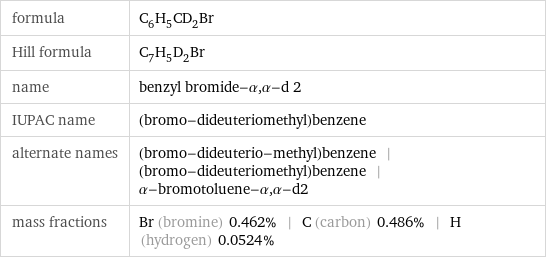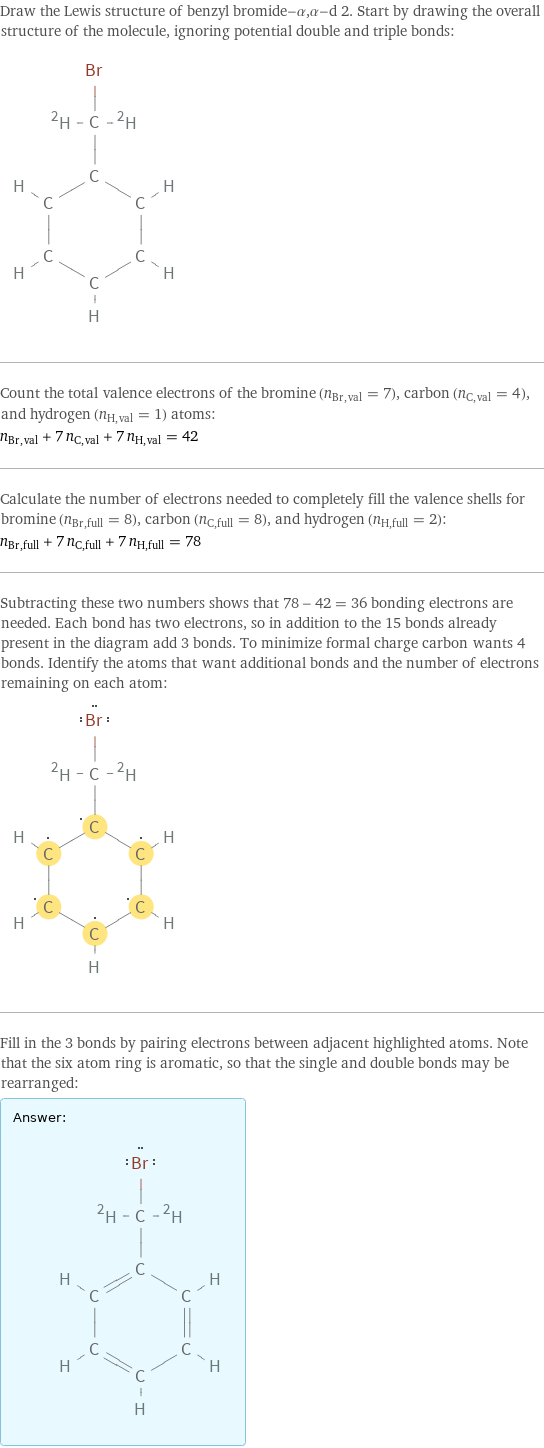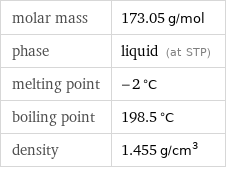Input interpretation

benzyl bromide-α, α-d 2
Chemical names and formulas

formula | C_6H_5CD_2Br Hill formula | C_7H_5D_2Br name | benzyl bromide-α, α-d 2 IUPAC name | (bromo-dideuteriomethyl)benzene alternate names | (bromo-dideuterio-methyl)benzene | (bromo-dideuteriomethyl)benzene | α-bromotoluene-α, α-d2 mass fractions | Br (bromine) 0.462% | C (carbon) 0.486% | H (hydrogen) 0.0524%
Lewis structure

Draw the Lewis structure of benzyl bromide-α, α-d 2. Start by drawing the overall structure of the molecule, ignoring potential double and triple bonds: Count the total valence electrons of the bromine (n_Br, val = 7), carbon (n_C, val = 4), and hydrogen (n_H, val = 1) atoms: n_Br, val + 7 n_C, val + 7 n_H, val = 42 Calculate the number of electrons needed to completely fill the valence shells for bromine (n_Br, full = 8), carbon (n_C, full = 8), and hydrogen (n_H, full = 2): n_Br, full + 7 n_C, full + 7 n_H, full = 78 Subtracting these two numbers shows that 78 - 42 = 36 bonding electrons are needed. Each bond has two electrons, so in addition to the 15 bonds already present in the diagram add 3 bonds. To minimize formal charge carbon wants 4 bonds. Identify the atoms that want additional bonds and the number of electrons remaining on each atom: Fill in the 3 bonds by pairing electrons between adjacent highlighted atoms. Note that the six atom ring is aromatic, so that the single and double bonds may be rearranged: Answer: | |
3D structure

3D structure
Basic properties

molar mass | 173.05 g/mol phase | liquid (at STP) melting point | -2 °C boiling point | 198.5 °C density | 1.455 g/cm^3
Units

Liquid properties (at STP)

density | 1.455 g/cm^3 refractive index | 1.575
Units

Non-standard atom properties

H-2 | 2
Chemical identifiers

CAS number | 51271-29-5 PubChem CID number | 12217700 PubChem SID number | 24872376 SMILES identifier | C1=CC=C(C=C1)CBr InChI identifier | InChI=1/C7H7Br/c8-6-7-4-2-1-3-5-7/h1-5H, 6H2/i6D2 MDL number | MFCD00084126
Safety properties

flash point | 86.67 °C